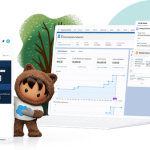Loyal customers will spend around 31% more with your company than new customers. That makes customer loyalty incredibly important for driving revenue.
Customer loyalty isn’t just about selling more. It’s also about the emotional relationship you build with your customers. Loyal customers trust your brand, recommend it, and return to buy again and again.
Customer loyalty is built on positive customer experiences. It is often formalised in customer loyalty programs that reward and incentivise your most valuable spenders. Customer loyalty programs are also a reliable way for businesses to obtain critical first-party customer data, and produce entirely new revenue streams.
These benefits are elevating the importance of customer loyalty programs within many organisations. However, many brands are still not leveraging the full power of customer loyalty.
1. Take an organisation-wide approach to customer loyalty
Customer loyalty should not be limited to marketing campaigns. Brands need to integrate loyalty programs into the entire customer lifecycle — from customer service to product returns. This will help to embed customer loyalty into the brand’s DNA, and create significant competitive differentiation.
To do so, brands need a connected ecosystem. That means providing a single, shared view of the customer across the organisation. This will not only enable better customer experiences. It will also help brands collect first-party customer data.
As Google prepares to remove support for third-party cookies, marketers must lead the switch to gathering first-party data. Loyalty programs will become one of the primary methods brands use to collect this vital customer data. This will further accelerate the elevated status of loyalty programs as the data they create becomes part of the brand’s balance sheet.
2. Provide premium benefits and exclusive experiences
According to a 2020 McKinsey survey, members of paid loyalty programs are 60 percent more likely to spend more on the brand after subscribing. The survey also found that paid loyalty programs drive higher purchase frequency, basket size, and brand affinity compared to free loyalty programs.
Paid loyalty programs can create an entirely new revenue stream for brands. This involves moving past a points-based program to focus on premium access, exclusive products, and special pricing.
Loyalty programs can also help brands maintain customer engagement outside of seasonal sales periods. For example, a leading swimwear brand uses its customer loyalty program to engage with customers beyond their busy summer-sales season. The brand uses customer data to personalise year-round customer communications, which are triggered through Marketing Cloud Journey Builder. This has increased members’ average spend by 20%.
3. Create a connected, frictionless loyalty ecosystem
Third-party loyalty ecosystems are empowering organisations to extend the value of their loyalty programs beyond what a single brand can offer. For example, ShopBack connects 30 million shoppers with around 10,000 merchants and partners, in-store and online. The connected rewards and discovery platform drove more than $3.5 billion in sales across Asia-Pacific.
Future loyalty programs will also require customers to do less. Embracing a 360-degree customer view will enable brands to remove friction from their loyalty programs and use them to create additional value in the customer journey with superior experiences.
Connected communities will be another key element of future loyalty programs. Loyalty programs that are able to create new communities will be able to drive more frequent and deeper connections with consumers.
Leverage the full power of loyalty
The future is bright for customer loyalty programs. To leverage the full power of loyalty, brands must change the way they think about customer loyalty. Customer loyalty programs will no longer be about how loyal customers will be to the brand. They will be about how loyal the brand is to the customer.
For customer loyalty to become a driving force of business, the customer must be at the centre of the business at all times. This can be achieved with a 360-degree customer view that brings your entire organisation closer to the customer.

























